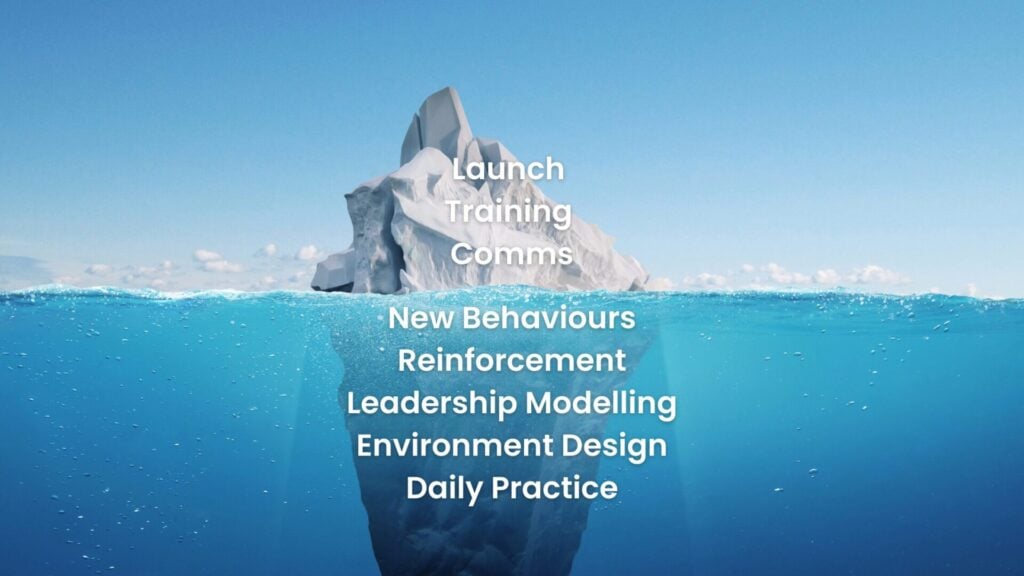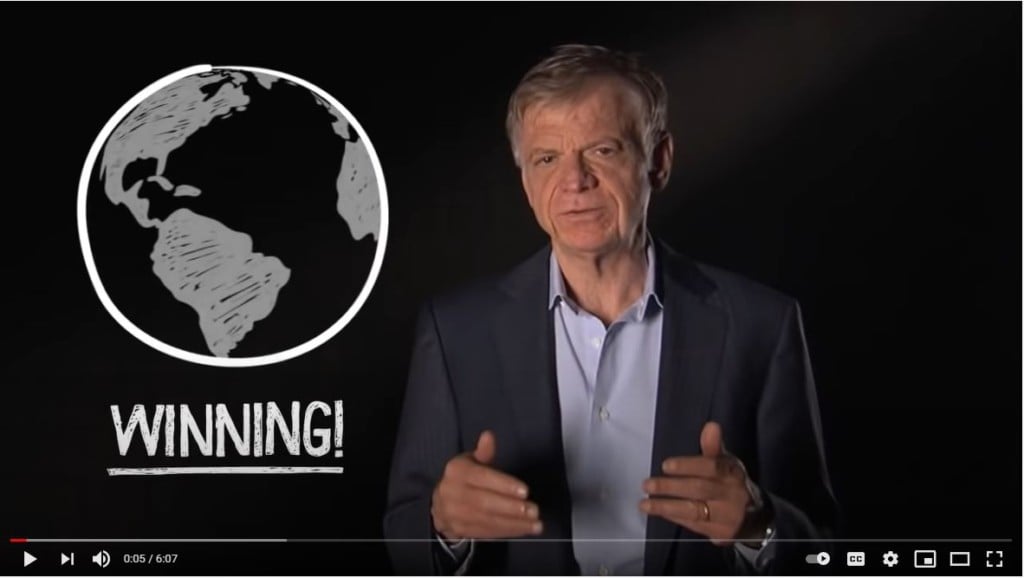The Secret to Making Organisational Change Feel Less Overwhelming
By Applied Change
Share

After the global events of recent years, it’s no wonder many of us are likely to think of change as a fast-paced sprint that can be unpredictable, unplanned and overwhelming. However, whilst change might be fast-paced and even unexpected at times, a focus on certain core areas can be the key to shaping our behaviours to ensure that the change is an overwhelming success rather than just overwhelming!
For organisations, whether change is part of the business plan or driven by external market forces, whether it is focused on one team or the whole organisation, it is an essential part of organisational growth. University of the West of England (UWE) student Kara Daly has been working with us to identify some key considerations for organisations looking to enact positive change, whatever the catalyst.
Background
The Change Journey Navigator tool explores the following five key themes for change:
- Employee motivation to change
- The perceived downsides, obstacles or risks to change
- How achievable the change feels for employees
- How confident employees are in the ability of the organisation to embed the changes
- Employee views on the organisational approach to continually reviewing and refining the change delivery.
Assessing these themes enables organisations to understand both the level of employee engagement and the extent of their overall readiness for change. But, if we look at change more widely, outside of the lens of just one organisation, are there key areas within these five themes that predict how someone is feeling about the change overall?
Together, we decided to interrogate the data to find out.
“Where there is data smoke, there is business fire” – Thomas Redman
Our data analysis tells us that yes, employee attitudes towards key areas within the five themes for change – more on this later – are a good predictor of how they feel about the change overall. Meaning that, if an employee feels negative about one of these key areas within one of the five themes, they’re likely to be feeling negative about the change overall – sounds simple when you put it like that, doesn’t it!
In practice, this matters because research has shown that feelings can determine employee actions during the change process (Bouckenooghe, 2010), and this can be the difference between an employee who resists change and one who supports and champions it.
So, what’s the secret, what are these key areas that can define employee attitudes towards change?
“I’ve got the key, I’ve got the secret” Urban Cookie Collective
This might sound like an unusual starting place but, from the very beginning of a change process, organisations should be thinking about how they are going to review and refine their approach to delivering the change. Our findings suggest that employees who perceive their organisation as willing to learn and improve during the change process, in a way that is open and without blame, are more likely to be feeling positive about the change overall.
Research suggests that this can be achieved by implementing a transparent and multi-directional internal communication approach (Li et al., 2019) that ensures employees understand the change plan, know when and where they can provide feedback and how this will then be used and shared.
This transparent approach to communication can also foster employee trust during the change process (Yue et al., 2019) and trust is a key element of psychological safety. During any change process, employees should be able to speak openly to constructively challenge the process without fear of personal detriment. By ensuring a psychologically safe space, organisations will be fostering an environment that supports team and organisational learning (Edmondson, 1999).
“Dissatisfaction and discouragement are not caused by the absence of things but the absence of vision.” – Anonymous
By this stage, you might be asking how you can evaluate change delivery without knowing the vision for change – and you would be quite right to ask this! Our findings suggest that vision is also key, with employees who view the vision for change as compelling being more likely to feel positive about the change. So, what does this mean for organisations?
In the field of occupational psychology, transformational leadership is a leadership style that is frequently researched alongside employee reactions to organisational change. Transformational leaders inspire and motivate through a well-communicated collective purpose and desirable shared vision. In a change scenario, the vision becomes a shared goal that everyone can work towards by achieving common objectives.
In practice, research shows us that a transformational approach to change can lead to employees who display a greater readiness for change, they are open to the idea of change and are committed to it (Peng et al., 2021). A compelling vision for change has the power to inspire and empower a workforce and where feelings towards the change are positive, behaviours will be too.
In summary
If your change project is feeling overwhelming and unmanageable, take a moment to ask yourself why. What is the vision for change, and how are you going to evaluate the change process along the way? If the answer to either question isn’t clear, it might be that this is a good place to focus on to ensure a positive organisational change outcome.
References
Bouckenooghe, D. (2010). Positioning change recipients’ attitudes toward change in the organizational change literature. Journal of Applied Behavioral Science, 46(4), 500-531.
Edmondson, A. (1999). Psychological safety and learning behaviour in work teams. Administrative science quarterly, 44(2), 350-383.
Li, J., Sun, R., Tao, W., & Lee, Y. (2021). Employee coping with organizational change in the face of the pandemic: The role of transparent internal communication. Public Relations Review, 41(1), 1-11.
Peng, J., Li, M., Wang, Z., & Lin, Y. (2021). Transformational leadership and employees’ reactions to organizational change: evidence from a meta-analysis. The Journal of Applied Behavioural Science, 57(3), 369-397.
Yue, C.A., Men, L.R., & Ferguson, M.A. (2019). Bridging transformational leadership, transparent communication, and employee openness to change: The mediating role of trust. Public Relations Review, 45(3), 1-13.
Get in touch
If you’re not achieving your goals or want get more done in your business, we can help.
Whether it’s supporting you, growing your leadership team or directly helping you to make something happen, contact us on (+44) 0800 612 3548 or click the button below.
Alternatively sign up below to be the first to know about our events and receive free resources and insider tips.
Related content
Are You Caught In This Trap?
Do you find yourself spending more time than ever keeping your business changes on track? Working longer and longer hours, stuck in meetings, buried in emails?
Embedding Change: Why Habits Matter More Than Announcements
Most change efforts fail not because of poor planning, but because old habits resurface after launch. Discover why behaviour change is the key to lasting transformation — and how to embed new habits that actually stick.
From change resistance to engagement: Learning lab workshop
Register Here Applied Change in collaboration with the Psychological Sciences Research Group at University of West of England (UWE) Have you noticed how the more you push people the more they tend to resist? Have…
Events Coming Soon…
Learn how to reduce resistance and unleash extraordinary change in your business
John Kotter – The Evolution of the 21st Century Organisation
John Kotter discusses why the organisational structures designed in the late 19th century are slowing businesses down in an era of rapid change. And what can be done to increase the pace. Whilst this was recorded in 2013, the lessons are, if anything, becoming more true by the day.






